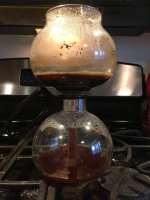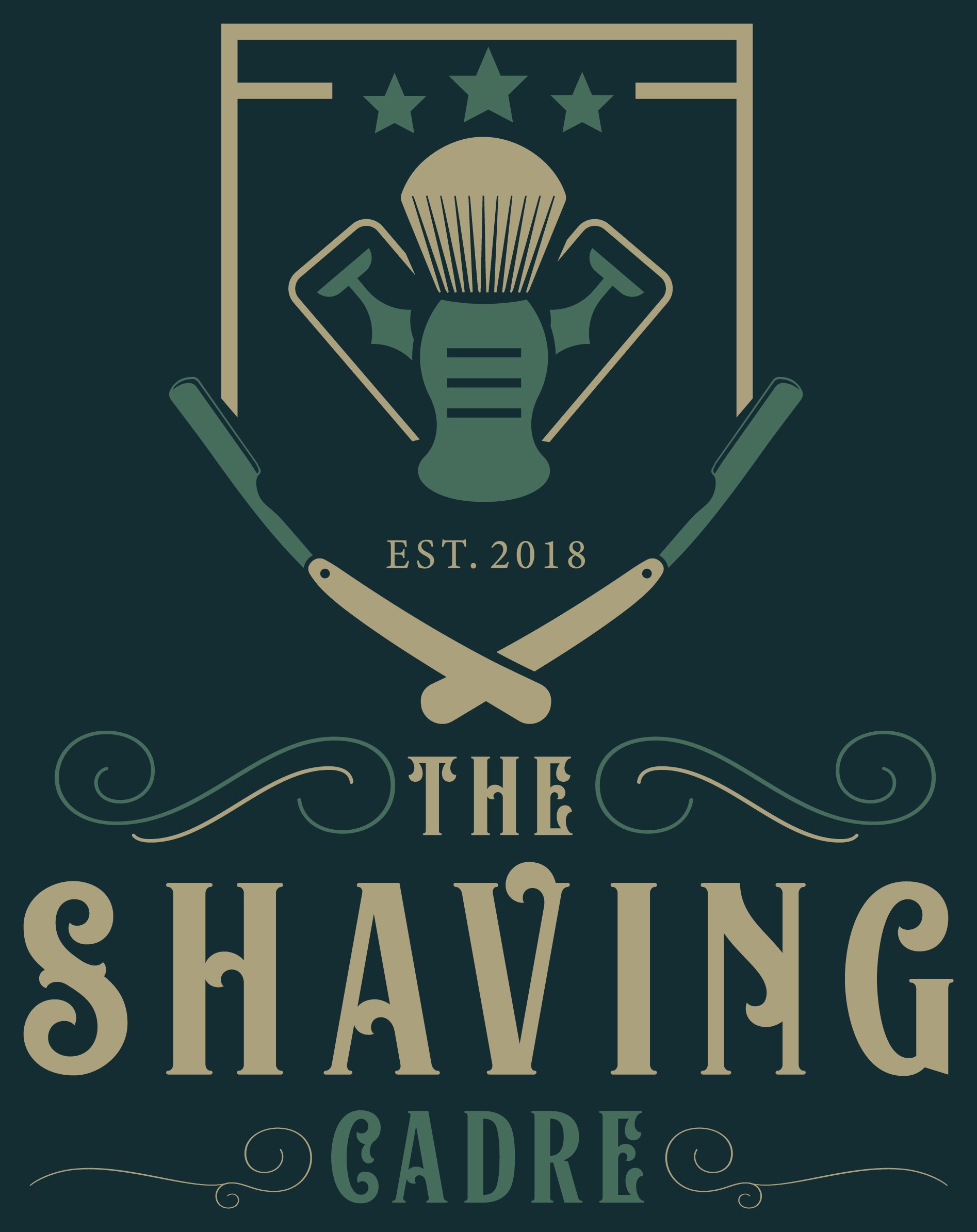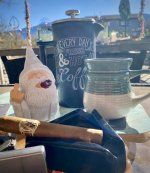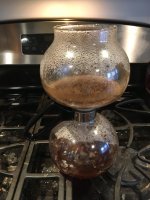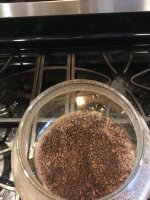As promised, here is a look at your basic siphon brew:
1. Take it out of the cabinet
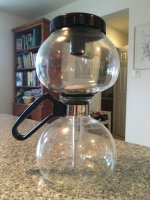
2. Views of the top chamber with filter attached
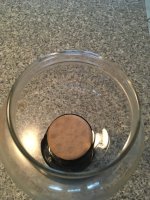
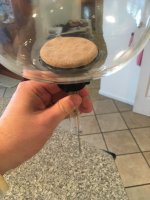
3. Preheat water, pour into the bottom chamber and attach the top (tight seal between the top and bottom)
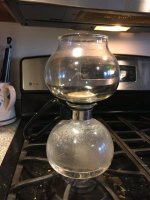
4. Turn on the heat, water gets hot, water vapor and hot air create pressure that forces the water up the siphon and into the top chamber
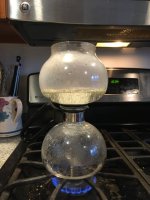
5. Add ground coffee (same grind as for drip coffee)
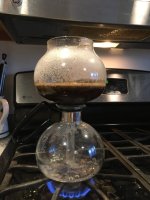
Heat stays on and the small amount of water in the bottom continues to bubble and keep the pressure on:

6. Stir the coffee, wait 45 seconds, stir coffee, wait 45 seconds (again)
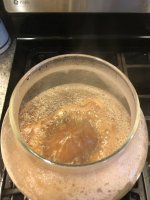
7. Turn off the heat
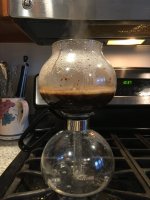
8. As the bottom flask cools, water temperature and air pressure in the bottom drop, so the coffee up top moves through the filter back to the bottom via the siphon
